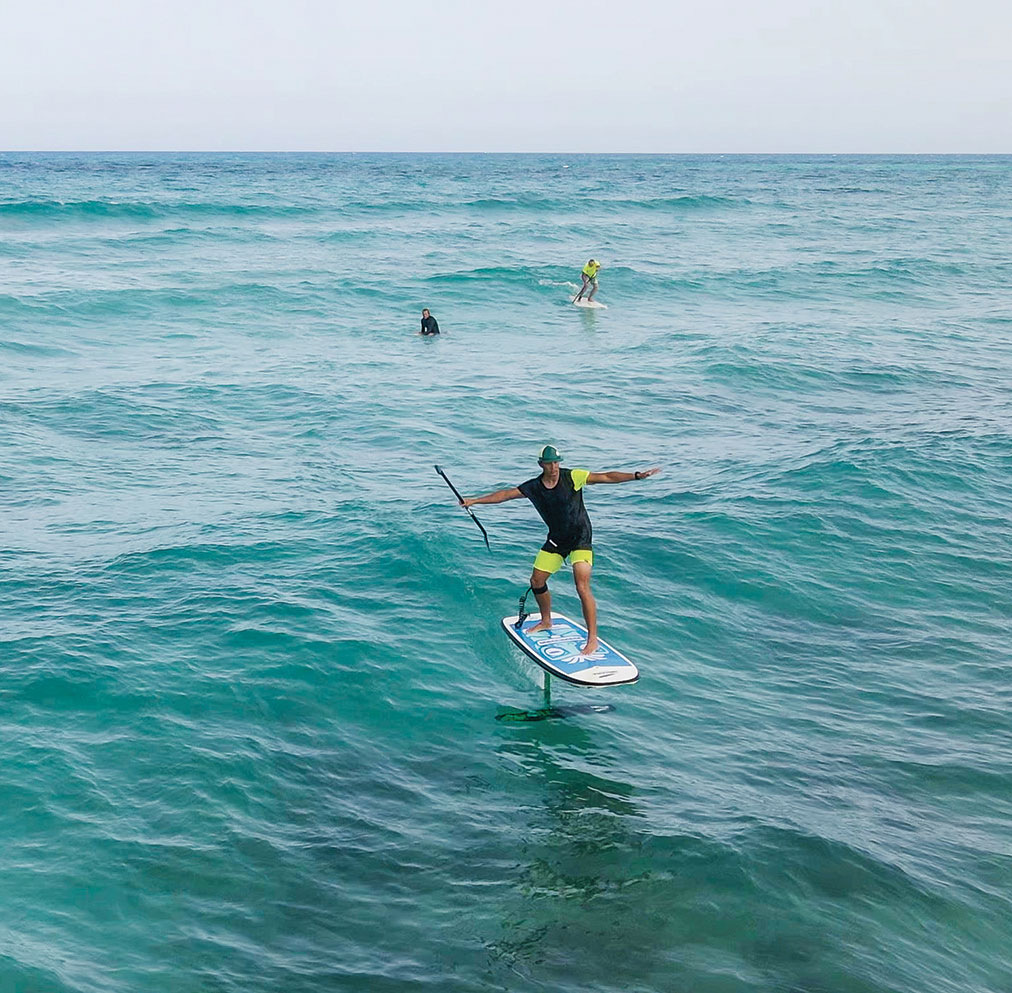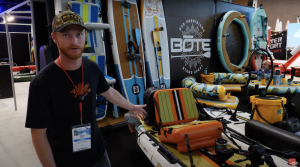“Move over SUP. There’s a new board in town.“
Since the beginning of the SUP industry, market participants have wondered how long the popularity of stand-up paddling will last. Are we nearing the end, or will foiling’s rise renew enthusiasm for the stand-up market?

From June 2020 to March 2022, paddleboard sales surged as COVID lockdown measures and travel restrictions affected lives on a global scale. Stand-up paddling, with its accessibility, versatility, and gentle learning curve, became a go-to for fitness and leisure while maintaining social distance.
By the end of 2022, the market had become flooded with paddleboards, now found in specialty shops, big box retailers, and even supermarkets. Yet, with travel possible again and the pressures of normal life returning, the influx of participants and the purchase of new boards soon waned. The future of SUP seemed to lose its luster until it seemed that suddenly, foils were everywhere.
Foils have earned accolades for their ability to unlock potential in a wide range of conditions, from flat waters to chop, and for their unparalleled glide. While foiling uses a similar platform to paddleboards, the sensation they generate is something else entirely.
“You get the serenity and the stability of stand-up paddling with the speed and extended glide time of foiling. Though it sounds relatively simple, the upgrade of the feeling is so intense that we don’t really have words to describe it,” writes LiftFoils on their website.
Like stand-up paddling, part of foiling’s growing popularity comes from its versatility. “I love the versatility of the sport,” says Indiana Paddle & Surf Co. board developer Gunnar Biniasch in an interview with North Kiteboarding. “You can do so much with a foil: wing, windsurf, prone, paddle, dockstart pumping, and kite.” A benefit of the increasing cross-over with wind-based sports is getting foil devotees to pick up a paddle on the water on calmer days, especially with boards like the Fanatic Bee or Starboard Hyper Nut, which make multiple sports accessible in one board.
“Where paddleboarding is accessible, foiling is aspirational.”
Where foiling differs greatly from paddleboarding are accessibility and ease of use. A large part of paddleboarding’s popularity came from its intuitiveness. Users didn’t need to be experienced or paddle-fit to enjoy the day out. Foiling, which generates momentum through “pumping,” has earned a reputation as a more technical sport than stand-up paddling, or at least one that requires more buy-in before becoming proficient. For Aztron Founder Tony Yeung, this doesn’t disclude foiling as a point of entry into the SUP market. Rather, it speaks to the need to develop and market beginner-friendly foil setups that are affordable and easy to use, of which brands are beginning to take note.
“Easier to use is definitely the main driving force for innovation on foil. On one side, more and more experienced SUP paddlers are wanting more excitement, so there is a need for beginner’s foil.”
Foiling’s technicality benefits the paddleboarding industry by creating a market for a high-end, added-value product that will help keep sales within the industry and generate demand for quality products that maintain higher margins. Where paddleboarding is accessible, foiling is aspirational. As such, it opens the doors to a market driven by different interests than the original paddleboard user, which isn’t necessarily negative. Though people of all ages, backgrounds, and interests can find a reason to foil, the market will likely remain niche enough that it is difficult to imagine non-specialty retailers carrying or selling foils en masse.
Alongside new users and retail opportunities, foil’s rising popularity allows brands to differentiate themselves in a market saturated with similar products. SUP foils are gaining traction in the surf, flatwater, and racing scenes, driving the innovation of foil-specific boards that feature advances in construction and design. Innovations will continue as brands work to make foiling more accessible and affordable. The push for higher levels of performance, from the ability to generate higher speeds to lighter-weight foils that offer better maneuverability, will also drive innovation and demand for the high-end models.
As foils improve, the more users they will attract. Regardless of how people learn to foil, a paddle is often a preferred method to generate the speed and stability needed to begin pumping or catch a wave. “SUP foiling is still ALL about your paddle. It’s your friend, if you let it be, as well as your main source of propulsion. Choose a good one and learn how to use it well,” advises Foilshop.co.uk.
Foiling may never match paddleboarding in popularity or growth rate, but it doesn’t have to. As the sport grows, it will continue to generate excitement and interest, forcing consumers to look at paddleboarding anew. Ultimately, the foil bubble, too, will burst. Everything does. For the time being, the momentum is set to continue, generating new SUP users, sparking innovation and creating new revenue streams. We might as well enjoy the ride.




